Radio Jove Observations of the Sun
Mary Lou West (Montclair State University, NJ)
A poster (22.07)
presented at the American Astronomical Society Meeting #199 in Washington, DC,
January, 2002
The Radio Jove receiver kit was assembled and soldered by three
undergraduates, following explicit instructions in the manual. The antenna was
set up on the grass quad for testing and then installed permanently on the roof
of Science Hall. Unfortunately, this is close to high tension transmission lines
and other radio noise sources. Routine observations have snared a few solar
events, about 33% of those in our observing times.

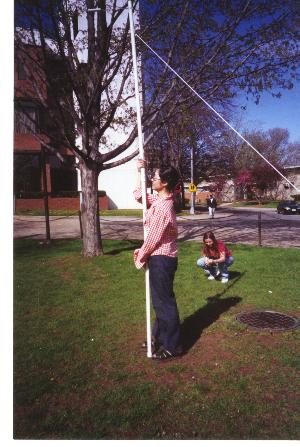
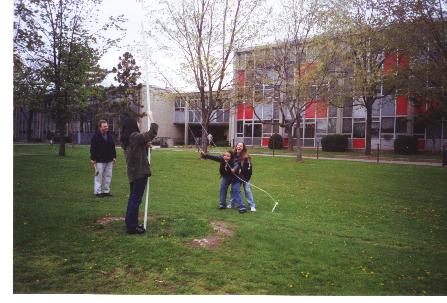

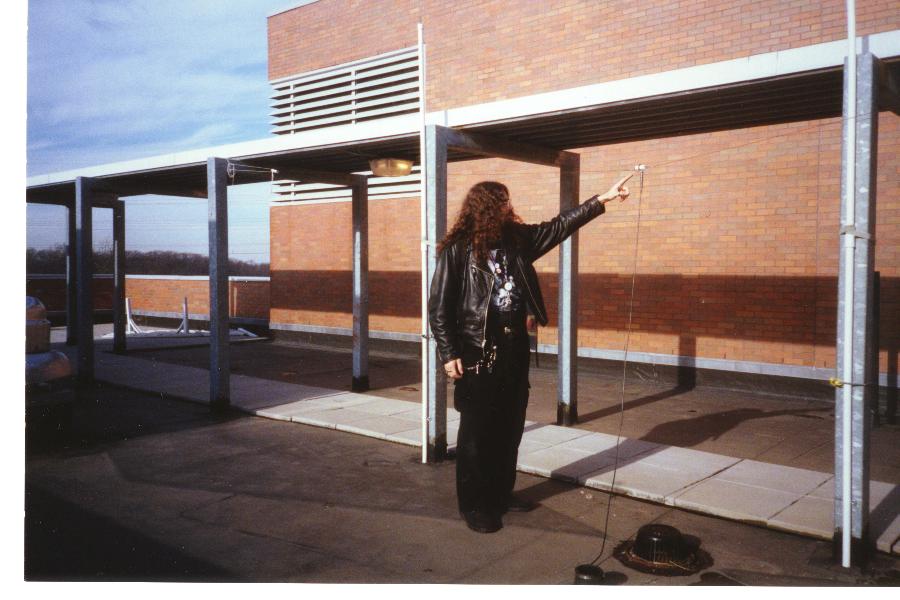
The receiver being tested. The antenna being set up temporarily on the grass
quad for testing. The antenna installed on the roof of Science Hall.
Equipment:
- RadioJove receiver kit (20.1 MHz) ($125, 11 hours, lots of solder)
- RadioJove antenna kit, dual dipole set up east/west (5 hours, lots of PVC
pipe)
- PC laptop running Radio-SkyPipe 1.0.80 (software is free from Jim Sky)
- Extreme Earphones ($30 from Radio Shack)
- Calibrator, RF-2020 noise generator ($130 from Dick Flagg)
An example of a strong solar radio burst (RBR) and radio spectrograph (RSP)
on August 25, 2001:
The background is about calibration level 3, about
95,000 kelvins, not very quiet.
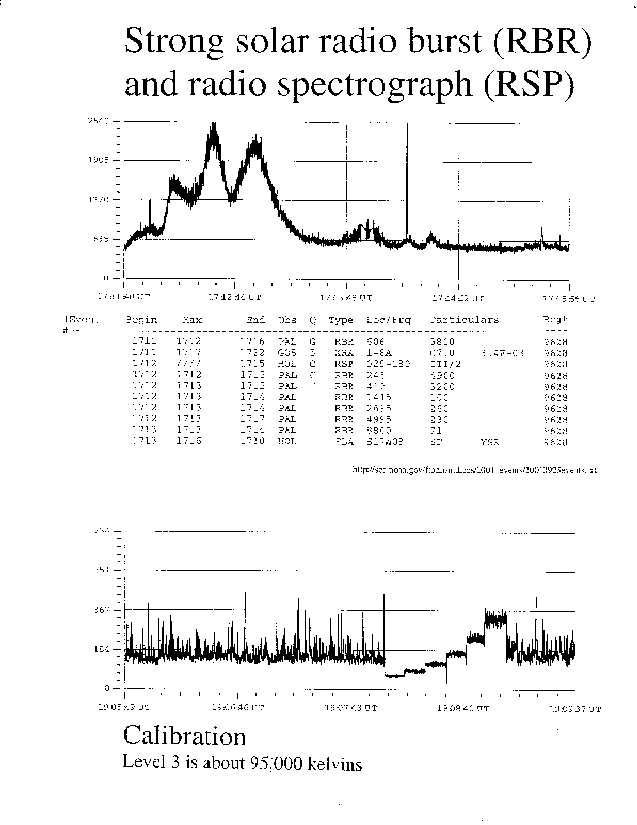
On another day (August 2, 2001) a solar burst was detected at Montclair State
University in New Jersey and at the same time by Dick Flagg at Windward
Community College in Hawaii.
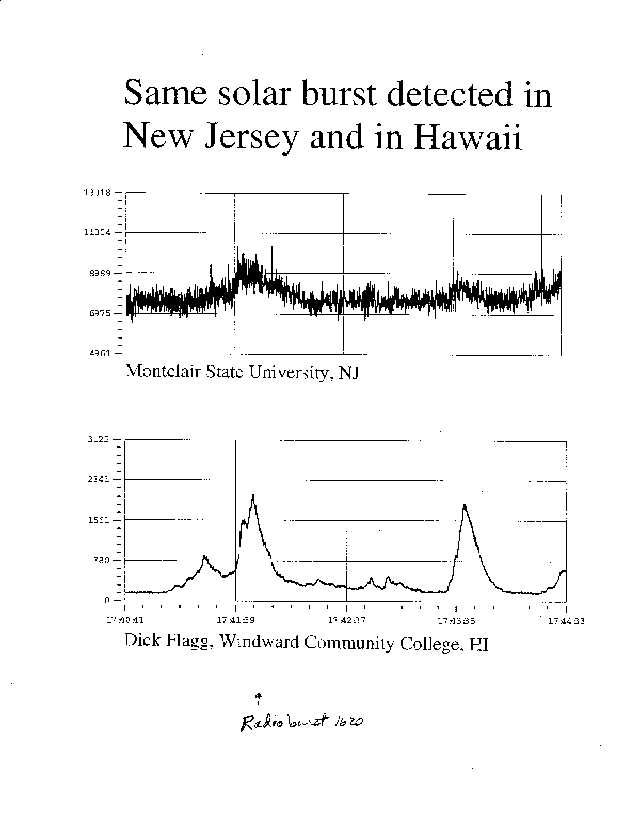
There are sources of confusion in the radio signal, but many can be
eliminated by using earphones. Here are examples of man-made interference, a
radio station drifting in frequency, and distant lightning strikes.

Correlations:
We tabulated the radio burst events reported by SEC from
satellites during the times we were observing with the Radio Jove system. In
nearly 60 hours of observation from July to December, 2001 we detected 33% of
these events, and also found:
- No dependence of the percent detected with month, so the Radio Jove beam
extends far from the zenith.
- No dependence of the percent detected with NOAA- SEC sunspot number.
- Sunspots were also observed in visible light with a "Sunspotter" and their
location was recorded. No dependence was found of the percent detected with
the number of sunspots in the central third of the sun.
- There are slightly more active radio sunspots on the sun's eastern
hemisphere.
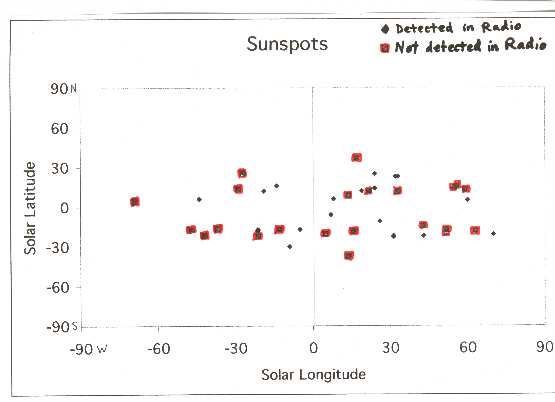
Strategy:
We will use the Sunspotter (quick and easy in the morning) to
look for large sunspots on the east side of the sun, then do radio observations
at lunchtime.
Conclusions:
- This equipment is instructional and fun to build and use.
- The Radio-skypipe chat window is great. It's fun to make friends in Europe
and Hawaii, especially if you are doing simultaneous observations.
- There is a good newsletter and listserv run by Jim Thieman, GSFC
- TRY IT!
Future plans:
- Look for correlations with sunspot area
- Observe Jupiter and its interaction with Io
- Find a quieter observing location
- Observe the Milky Way center by a long drift scan
- Increase the signal to noise ratio
- Observe longer, observe automatically
Useful Resources:
- radiojove.gsfc.nasa.gov (kit, program coordination)
- sec.noaa.gov/ftpdir/indices/events/ (radio and other events)
- sec.noaa.gov/ftpdir/indices/DSD.txt (sunspot numbers)
- ufro1.astro.ufl.edu (archive of radio scans)
- jupiter.wcc.hawaii.edu (Dick Flagg)
- radiosky.com (Jim Sky)
- www.lightningstorm.com
The Radio Jove flyer from Goddard SpaceFlight Center:
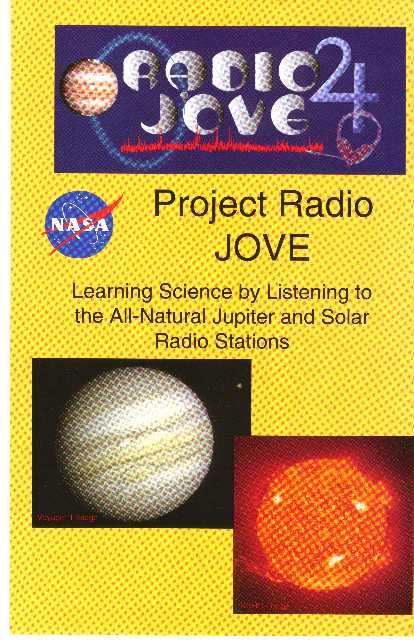
This page is http://www.csam.montclair.edu/~west/radiojoveposter.html
AAS
Meeting 199 in Washington, DC January, 2002
west@pegasus.montclair.edu













